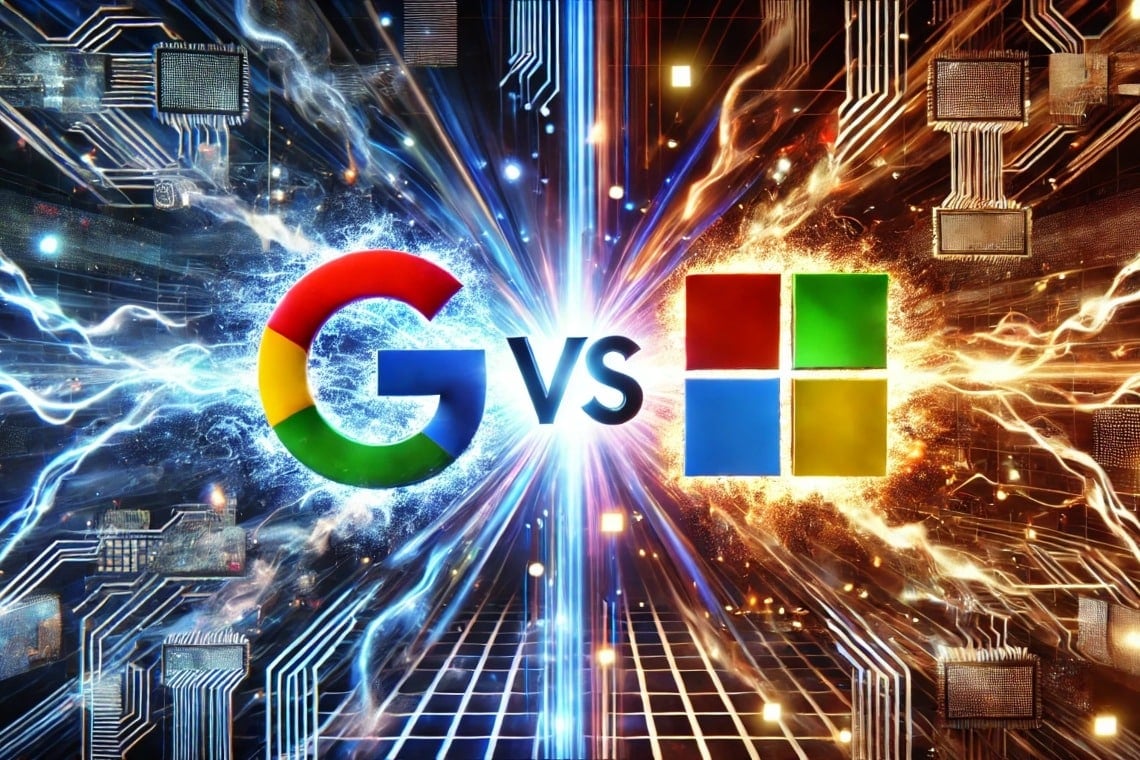Microsoft vs Google: Edge has made strides as an AI browser, but its methods to convince Chrome users to abandon it seem more coercive than persuasive, generating frustration among consumers.
Let’s see all the details in this article.
Edge focuses on integration with Copilot AI: the future is Microsoft vs Google
As anticipated, Microsoft has embarked on a determined campaign to make Edge the dominant browser for Windows users, but the methods used are raising controversies.
According to a recent report by The Verge, Microsoft has intensified its strategies to attract Google Chrome users, including a series of updates that many consider invasive.
Edge is no longer just a standard browser. It has indeed become a key element in the Microsoft ecosystem, designed to work seamlessly with Windows and integrate the latest technologies, such as the AI assistant, Copilot.
While this interconnection can make it an interesting choice for some, the ways in which Microsoft promotes Edge have raised quite a few concerns. Windows users, in fact, have reported a series of aggressive behaviors of the browser.
One of the most evident tactics is the default configuration of Edge, which prioritizes itself over other browsers.
Every time you turn on the PC, it is possible that Edge opens automatically, showing a pop-up that promotes its integrated features, including Copilot.
Next to this, there is an option already selected to automatically import browsing data from Chrome, including history, bookmarks, and open tabs.
Although users can disable this setting, the fact that it is set by default has irritated many, who feel pushed to make the change without wanting to.
Microsoft has defended this choice, stating that users always have the option to decline. However, the appealing interface and preset options can lead those who are not paying attention to migrate their data unintentionally.
In response to the criticisms, Caitlin Roulston from Microsoft explained the following:
“Our intention is simply to offer more control to users.”
However, users who prefer to continue using Chrome without being continuously prompted to switch to Edge do not seem to appreciate this approach.
The criticisms of the users
In any case, it is not everything. Those who wish to uninstall Edge quickly discover that it is not an easy task. The browser is indeed integrated into the Windows operating system, and even when it is removed, it often returns with subsequent Windows updates.
This level of persistence has generated frustration among users, who perceive Microsoft’s moves as a bull rather than a gentle and optional proposal.
This is not the first example of aggressive tactics by Microsoft. Already in 2021, the company had implemented mechanisms that made it complicated to set a browser other than Edge as default.
Consequently causing a wave of protests that led her to reconsider some policies. In 2022, she introduced a feature that allowed Edge to automatically import data from Chrome, even though it was possible to refuse.
Despite the negative reactions, Microsoft seems to have decided to continue pushing Edge with equally determined means.
The controversies on Copilot
The integration with Copilot, the assistant AI, is one of the strengths that Microsoft is trying to leverage. Copilot offers advanced features that could attract users interested in a more intelligent and interactive browser.
However, even these benefits are not enough to compensate for the annoyance caused by the constant requests to abandon Chrome.
Many believe that if Microsoft truly wants Edge to be taken seriously, it should allow the browser to stand out on its own merits, without resorting to pushy practices.
Microsoft’s approach could, paradoxically, drive users away instead of bringing them closer. Aggressive persuasion strategies risk creating a boomerang effect, pushing users to seek alternatives even further from Edge.
Ultimately, if Microsoft really wants Edge to become a preferred choice, it could benefit from a change of strategy, showcasing the advantages of the browser without imposing it forcefully.
The debate on how Microsoft handles the promotion of Edge thus remains heated. On one hand, there is the vision of an integrated ecosystem that offers a seamless experience for those who use Windows and appreciate Copilot AI.
On the other hand, there are consumers who defend their freedom of choice and want a browsing experience free from pressure. In other words, only time will tell if Microsoft will decide to change course or continue to pursue this controversial strategy.
